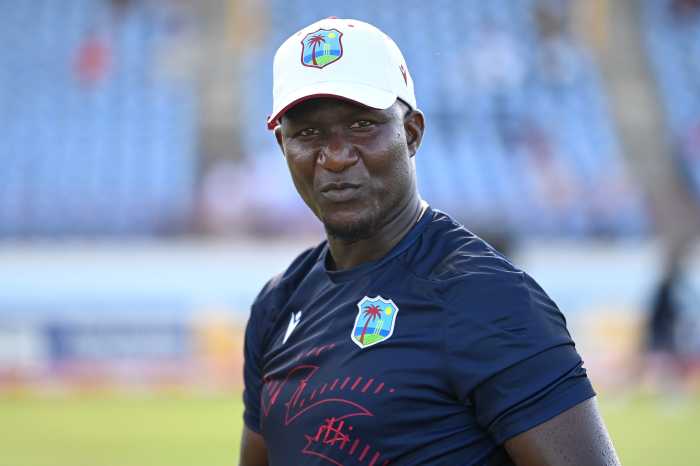Rising infection rates impel activists to pay for ads and speak out
Following a town meeting at the Lesbian, Gay, Bisexual and Transgender Community Center that drew hundreds of people who are concerned about rising HIV infections among gay and bisexual men, participants continue to offer a range of suggestions on efforts to address the crisis.
Kellerhouse said he hoped that AIDS groups and local government agencies that are concerned with the epidemic would address what many people in the town meeting expressed—HIV infections among gay and bisexual men demand a response.
“AIDS is and always has been a public health emergency,” Kellerhouse said. “That fact has been lost. In some ways, nobody is really listening. The sense of urgency around HIV and AIDS has gotten lost in the discourse.”
The organizers collected the e-mail addresses of some 250 people who came to the meeting and they will press those people to take follow up steps. That could include encouraging them to contact AIDS groups or governmental officials with demands for action.
“We want to empower those people that were there and not let go of them,” Kellerhouse said. “I’m not always hopeful that the structure for prevention is able to overcome its own inertia.”
The two men also plan to hold at least two more meetings next year. One will focus on crystal meth and HIV. The second will explore HIV among men under 30.
That was certainly true of the people who attended on November 16, but one notable feature of that event is that only Carlson and Peter Staley, a panelist, talked about their experience with unsafe sex.
“My opinion is that lack of discussion among the audience indicates how secretive this discussion is,” Carlson said. “It’s very difficult to admit you’ve had unsafe sex, it’s very taboo.”
Staley will be striking at that silence right in the heart of New York City’s gay male community. He has spent over $5,000 dollars to place ads on Verizon phone booths along Eighth Avenue in Chelsea. The ads, which should be up beginning in January, feature a male model and the text reads “Huge Sale! Buy Crystal, Get HIV Free!”

Staley, a longtime AIDS activist, discussed his crystal meth addiction at the meeting and how it led him to unsafe sex. Crystal, in Staley’s view, is a major contributor to unsafe sex and new HIV infections.
“Crystal needs to have the reputation it deserves so people can make an educated choice,” Staley said. “There continues to be a perception, especially among young gay men, that crystal meth is just another party drug.”
Staley, who tested HIV–positive in 1985, had a two-year addiction to crystal that took him on roughly 30 binges with each one lasting anywhere from 15 to 72 hours. Those binges included marathon bouts of unsafe sex. Staley has not used crystal in more than a year.
Another panelist, Dennis deLeon, president of the Latino Commission on AIDS, will be organizing meetings with other groups that serve Latinos to reinvigorate their HIV prevention efforts.
“For us here it’s to try and reignite the discussion around safer sex,” deLeon said. “We have all these groups that we work with and we’re going to be convening them to talk about why are we letting ourselves get infected again.”
Part of the problem, deLeon said, is that so many clients see so many of their peers having unsafe sex that becoming HIV positive seems inevitable.
“There is a lot of resistance to it because people have such a sense of futility about making a difference,” deLeon said. “The people that we serve they think that all their friends are doing it. It seems like you’re the odd man out of you don’t.”
Government funders are also moving away from paying for highly public media campaigns to counter HIV. The federal Centers for Disease Control and Prevention (CDC) are abandoning that approach, according to deLeon.
“The CDC doesn’t want to have community-level interventions,” he said. “There is no more money for these kinds of broad based interventions… The CDC, I think because of pressure from Christian conservatives, wants to make the whole thing invisible.”

That means that money for any prevention efforts will have to come from the gay community.
“That’s the only government money out there so anything that happens, the community is going to have to pay for,” deLeon said.
For panelist Michael Roberson, director of services at People of Color in Crisis, that is business as usual. “Our efforts are large, but the resources we have to work with are small,” he said.
His Brooklyn-based AIDS service group is not thinking about any new departures in their approach, but rather carrying on the work they have been doing. That is promoting HIV testing, talking about the whole of black gay men’s lives, and pressing for research on black gay men and HIV.
“I haven’t heard anything since that meeting about a next step,” he said. “We continue to do what we do… This year we are planning a big initiative around testing and connecting people to services.”
Photos: Patti Suarez
We also publish:

































